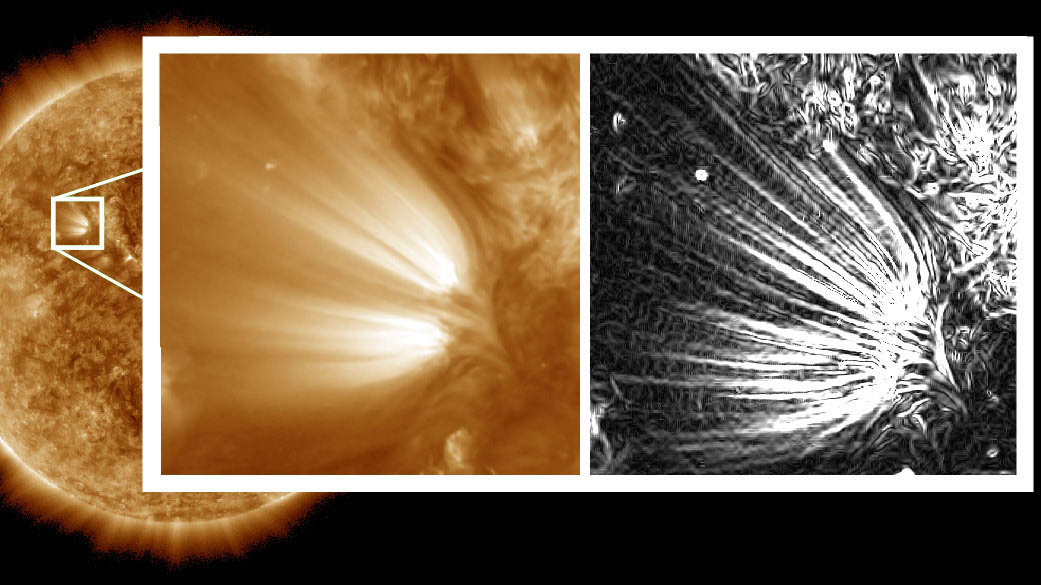Scientists used image processing on high-resolution images of the Sun to reveal distinct “plumelets” within structures on the Sun called solar plumes. The full-disk Sun and the left side of the inset image were captured by NASA’s Solar Dynamics Observatory in a wavelength of extreme ultraviolet light and processed to reduce noise. The right side of the inset has been further processed to enhance small features in the images, revealing the edges of the plumelets in clear detail. (NASA/SDO/Uritsky, et al)
Home Scientists used image processing on high-resolution images of the Sun to reveal distinct “plumelets” within structures on the Sun called solar plumes. The full-disk Sun and the left side of the inset image were captured by NASA’s Solar Dynamics Observatory in a wavelength of extreme ultraviolet light and processed to reduce noise. The right side of the inset has been further processed to enhance small features in the images, revealing the edges of the plumelets in clear detail. (NASA/SDO/Uritsky, et al) Scientists used image processing on high-resolution images of the Sun to reveal distinct “plumelets” within structures on the Sun called solar plumes. The full-disk Sun and the left side of the inset image were captured by NASA’s Solar Dynamics Observatory in a wavelength of extreme ultraviolet light and processed to reduce noise. The right side of the inset has been further processed to enhance small features in the images, revealing the edges of the plumelets in clear detail. (NASA/SDO/Uritsky, et al)
Scientists used image processing on high-resolution images of the Sun to reveal distinct “plumelets” within structures on the Sun called solar plumes. The full-disk Sun and the left side of the inset image were captured by NASA’s Solar Dynamics Observatory in a wavelength of extreme ultraviolet light and processed to reduce noise. The right side of the inset has been further processed to enhance small features in the images, revealing the edges of the plumelets in clear detail. (NASA/SDO/Uritsky, et al)



